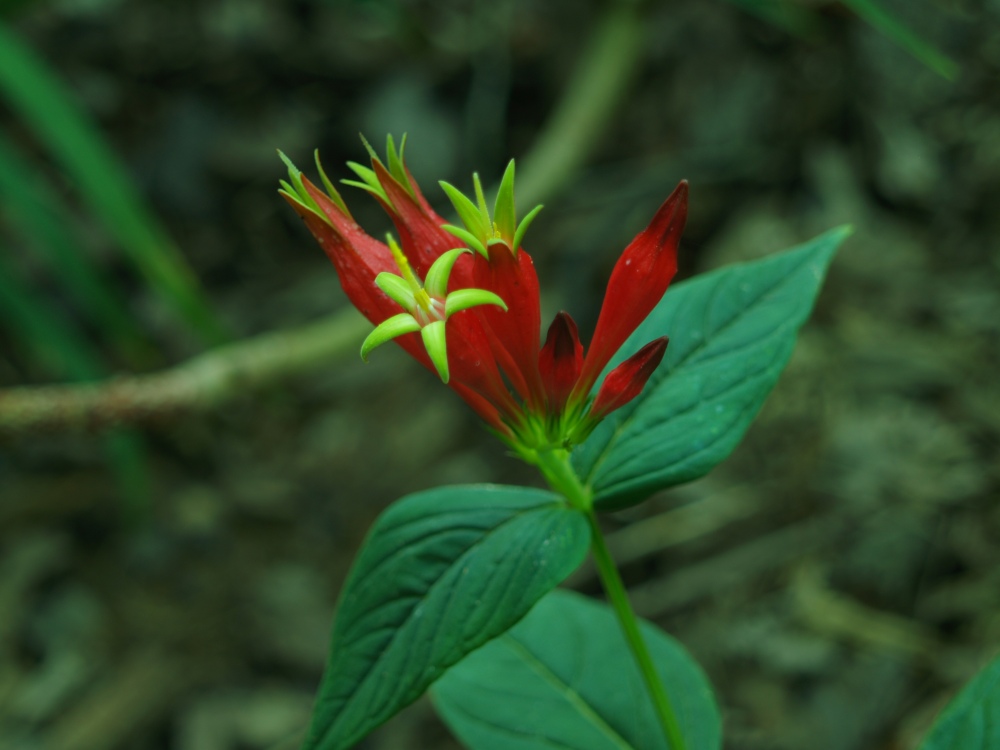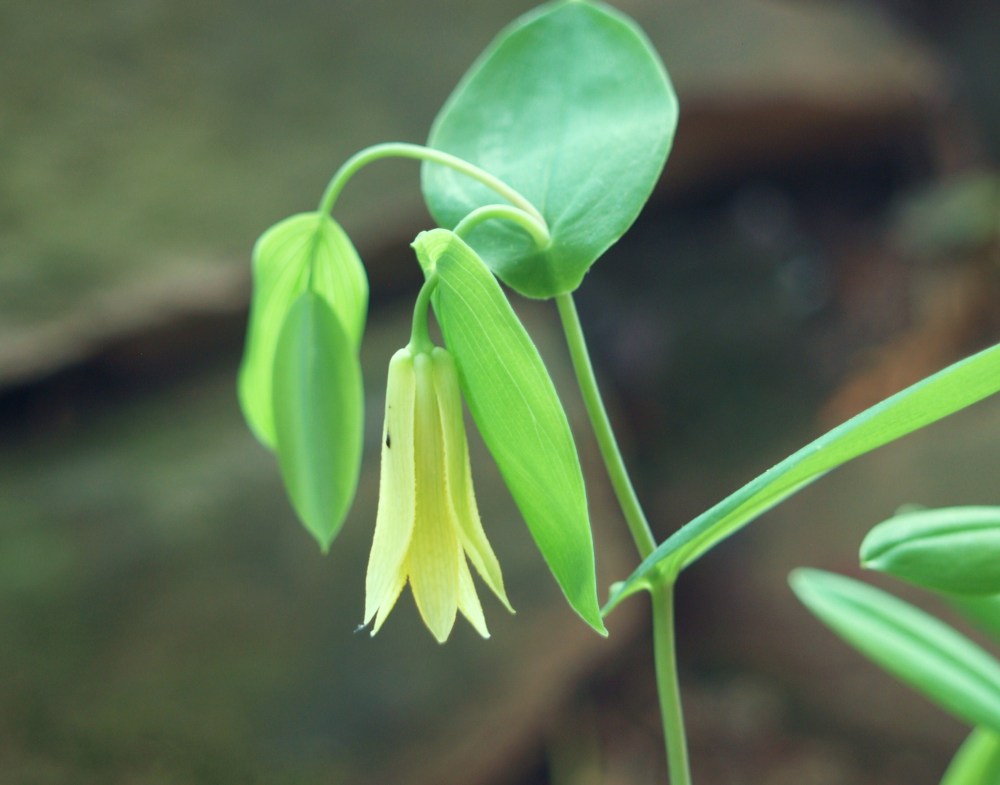Until a few weeks ago there was every reason to suspect that the Indian pinks (Spigelia marilandica, below) had disappeared along with so many others as a result of the winter’s cold. Some casualties can be blamed on excess moisture that has plagued the lower part of the rear garden for the past few years, but I figured that it was cold that got the pinks. But, then they appeared, and a few weeks later they’re flowering, a month late, but thankfully they’re still here (and without suffering significant damage).  Someday, the pinks are supposed to spread to form a small colony, but they’ve been slow to spread at all, and the winter nipped them back a bit so that they’re back to where they were a few years ago. The flowers of Indian pinks are small, so they must fill in to a thick clump to compensate or they are hardly seen. So far, this isn’t happening, but they’re alive, so there’s hope.
Someday, the pinks are supposed to spread to form a small colony, but they’ve been slow to spread at all, and the winter nipped them back a bit so that they’re back to where they were a few years ago. The flowers of Indian pinks are small, so they must fill in to a thick clump to compensate or they are hardly seen. So far, this isn’t happening, but they’re alive, so there’s hope.  Another native, Sessile bellwort (Uvularia sessifolia, above) survived the winter without objection, but it failed to flower in mid spring. Many, and probably most trees, shrubs, and perennials that typically flower in April were delayed by several weeks or a month after cold temperatures persisted early into the month, but few failed to flower at all. Again thankfully, the bellwort survived in good health, and if a one year hiatus from flowering is the only consequence of the winter, that’s not too great a cost.
Another native, Sessile bellwort (Uvularia sessifolia, above) survived the winter without objection, but it failed to flower in mid spring. Many, and probably most trees, shrubs, and perennials that typically flower in April were delayed by several weeks or a month after cold temperatures persisted early into the month, but few failed to flower at all. Again thankfully, the bellwort survived in good health, and if a one year hiatus from flowering is the only consequence of the winter, that’s not too great a cost.
The mophead hydrangeas (Hydrangea macrophylla) continue to grow vigorously, but still there are no signs of flower buds forming. While old varieties flower only on old wood (with flower buds formed late last year), many new varieties bloom on old and new wood, so while older stems were damaged by cold, flowers should form on the new growth. But, I have learned over many years of disappointment that plants are more complex than this, and there is some equation of damage from the winter, plus overly vigorous foliar growth that has caused the hydrangeas to be slow to set buds. I expect they will, but I’m not betting on the timing.
Lacecap types (Hydrangea macrophylla ‘Twist n’ Shout’, above) were not bothered by the winter at all, with the exception of the variegated lacecap (Hydrangea macrophylla ‘Mariesii Variegata’, below) that was killed to the roots and is rebounding nicely. The other lacecaps are in full bloom today, and without checking my somewhat sketchy records I figure this is later than usual, which would not be much of a surprise, but they’re flowering as good as ever. Please don’t ask what the difference is between the various lacecaps and mopheads and why some will be damaged more by winter temperatures. This information is well beyond my capabilities.  Several of the recently introduced ‘Bloomstruck’ (below) were planted in early spring, and after a difficult start these have set buds and are beginning to flower. The breeder has demanded that growers ship only plants with buds, so when my first ‘Bloomstruck’ were delivered in early April the foliage and flower buds were immediately fried by one of the many late freezes. After this setback, I was prepared that the hydrangeas would struggle through and probably would not flower (if they survived), but they have grown back strongly. It is curious, however, that all flowers so far are deep pink rather than the blue of other hydrangeas in the garden’s acidic soil. Again, the formula that determines flower color is too much for me to figure, so I’ll be happy with whatever color they decide on.
Several of the recently introduced ‘Bloomstruck’ (below) were planted in early spring, and after a difficult start these have set buds and are beginning to flower. The breeder has demanded that growers ship only plants with buds, so when my first ‘Bloomstruck’ were delivered in early April the foliage and flower buds were immediately fried by one of the many late freezes. After this setback, I was prepared that the hydrangeas would struggle through and probably would not flower (if they survived), but they have grown back strongly. It is curious, however, that all flowers so far are deep pink rather than the blue of other hydrangeas in the garden’s acidic soil. Again, the formula that determines flower color is too much for me to figure, so I’ll be happy with whatever color they decide on. 